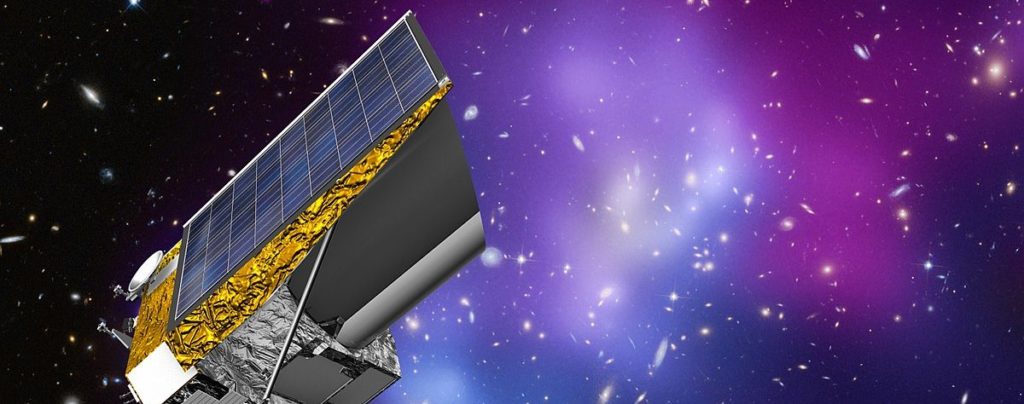Euclid is a space-mission orchestrated by the European Space Agency, which will send a 1.2m class telescope to space and take high quality imaging of tens of millions of galaxies. The primary science focus is cosmology and dark energy – we want to understand why the Universe is expanding and, more importantly, why this expansion is accelerating.

In Euclid, I work on weak gravitational lensing. This is fundamentally the same phenomenon as strong lensing (described here). However, whilst strong lensing concerns itself with individual galaxies which are massively distorted by gravity, weak lensing focuses on the simultaneous study of large samples of galaxies which are fractionally distorted.
To measure weak lensing, galaxy imaging needs to be exquisite. Unfortunately, many effects will degrade the quality of Euclid’s imaging over its lifetime. I work on modeling the effect of radiation damage (due to bright emission from the sun) that will degrade the Euclid detector electronics over the satellite’s 5 year life-cycle.
Radiation damage causes an increase in the “Charge Transfer Inefficiency” of the CCD detectors, which induces a gradually worsening smearing of the images that Euclid will observe. If our goal is to make precise and accurate measurements of galaxy shapes, this smearing could be a major source of systematic error.
My research uses models of CCD detector physics (guided by solid state theory and laboratory experiments) to correct this smearing effect in every image Euclid will observe. This is implemented in the software package PyAutoCTI, which I lead development of.
Euclid is also set to discover one hundred thousand strong lenses, and we do not want their images to be degraded before we analyse them with PyAutoLens! Check out the press release I did on Euclid and strong lensing for the 2016 UK National Astronomy Meeting for more information.
PyAutoCTI Links:
GitHub: https://github.com/Jammy2211/PyAutoCTI
readthedocs: https://pyautocti.readthedocs.io/en/latest/
